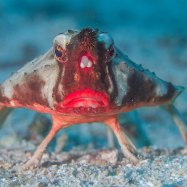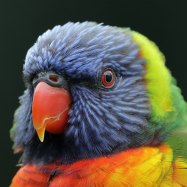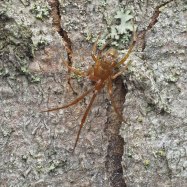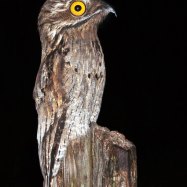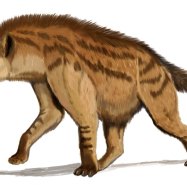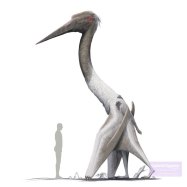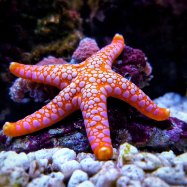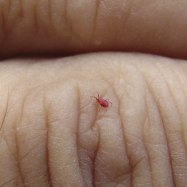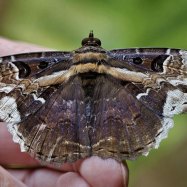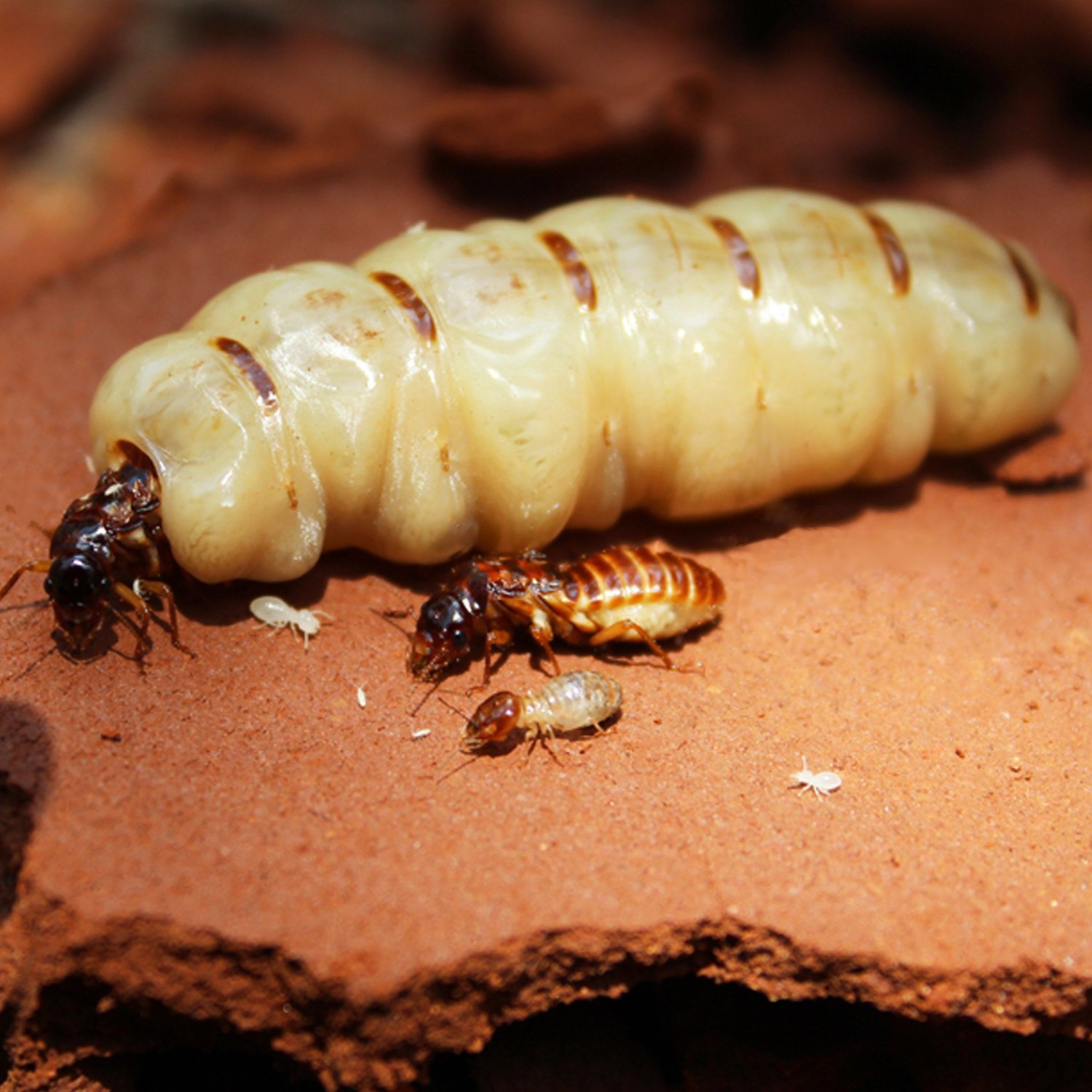
Termite
The length of a termite can vary depending on the species, but they are typically around 0.2 to 1 inch (5 to 25 mm) long.
Termites, also known as white ants, are small but mighty insects found worldwide. They measure between 0.2 to 1 inch and belong to the Termitidae family. With a soft and elongated body, they are divided into three parts: head, thorax, and abdomen. These wood-eating creatures play a critical role in our ecosystem and are essential decomposers. #termites #insects #nature.
Animal Details Summary:
Common Name: Termite
Kingdom: Animalia
Habitat: Termites can be found in various habitats including forests, woodlands, grasslands, and even urban areas.
The Fascinating World of Termites: Builders of the Animal Kingdom
When we think of insects, our first thought may be of pesky bugs that invade our homes or crawl around our gardens. But there is one group of insects that plays a significant role in maintaining the balance of our ecosystem – termites. These tiny creatures, also known as "white ants," are fascinating creatures that have intrigued scientists and nature enthusiasts for centuries.Let's delve into the world of termites, explore their biology, behavior, and significance in the animal kingdom Termite.
The Basics: Scientific Classification and Distribution
Classified under the scientific name Isoptera, termites belong to the kingdom Animalia, phylum Arthropoda, and class Insecta. They are a part of the order Blattodea, commonly known as cockroaches, and the family Termitidae. Termites can be found worldwide, except for the colder regions of the Arctic and Antarctica.Historically, termites have been primarily associated with tropical regions, but they can survive in a wide variety of habitats, including forests, woodlands, grasslands, and even urban areas. In fact, termites have adapted to urban environments so well that they are now considered pests in some areas.
The Diet of Termites: Herbivores with an Appetite for Cellulose
Termites are known as herbivores, meaning they primarily feed on plant materials. However, contrary to popular belief, these tiny insects do not actually eat wood. Instead, they feed on cellulose, the main component of plant cell walls, found in various plant materials such as wood and plant debris.Termites have a unique digestive system that enables them to break down cellulose Tennessee Walking Horse. They have a symbiotic relationship with microorganisms in their gut, which helps them digest cellulose and obtain nutrients from their diet.
Interestingly, termites also have a critical role in the decay process of dead plants, which aids in the recycling of essential nutrients in the ecosystem.
The Physical Characteristics of Termites
Termites have a distinctive appearance that sets them apart from other insects. They have a soft-bodied and elongated body that is divided into three main parts – the head, thorax, and abdomen.Most termites are small in size, measuring around 0.2 to 1 inch (5 to 25 mm) long. However, some species can reach lengths of up to 2 inches (50 mm). As for their color, termites can vary depending on the species, but they are commonly pale or light-colored.
Despite their delicate appearance, termites have a remarkable resilience and can adapt to various environments, from dry deserts to humid rainforests.
Their Sophisticated Social Structure and Behavior
One of the most intriguing aspects of termites is their social structure and behavior. These tiny insects live in large colonies that can number in the millions, making them one of the most abundant and successful groups of animals on the planet.Each termite colony is divided into different castes, with each member having a specific role to play. The three primary castes are workers, soldiers, and reproductives.
Workers are the most numerous and are responsible for the overall functioning of the colony. They build and repair the nest, tend to the eggs and larvae, and gather food.
Soldiers are tasked with defending the colony from potential threats, such as ants or other predators. They have enlarged and powerful mandibles used for protection and can secrete a sticky substance to trap enemies.
Finally, reproductives, also known as "winged termites," are responsible for reproduction and creating new colonies. They are the only termites with wings and emerge from the nest at specific times to find a mate and start a new colony.
Termites also display advanced social behavior, such as communication, cooperation, and division of labor, making them one of the most socially sophisticated insects in the animal kingdom.
The Benefits and Significance of Termites in the Ecosystem
Termites may be small, but they play a vital role in maintaining the balance of the ecosystem. As herbivores, they help to decompose and recycle plant materials, ensuring that nutrients are returned to the soil.Moreover, termite mounds, which are created by workers using soil, saliva, and feces, serve as homes for a variety of other animals, such as reptiles, insects, and even plants. They also have a profound influence on soil structure and fertility, promoting the growth of plants in surrounding areas.
Termites also act as a food source for a variety of animals, including birds, reptiles, and mammals, which rely on them for their survival.
The Threat of Termites on Human Structures
While termites play a positive role in the ecosystem, they can also be a significant nuisance for humans. Termites are known for their ability to cause severe damage to wooden structures, including homes and buildings.Termites feed on wood, which can significantly weaken the structure over time, leading to costly repairs. Estimates suggest that termites cause billions of dollars of damage in the United States alone every year.
Therefore, termite infestations must be dealt with promptly and effectively to prevent further damage.
In Conclusion: Awe-Inspiring Builders of the Animal Kingdom
Termites may be tiny, but they are undoubtedly one of the most remarkable and fascinating creatures in the animal kingdom. Their social behavior, resilience, and crucial role in maintaining the balance of the ecosystem make them awe-inspiring.From their diet to their behavior, termites have evolved over millions of years to become an essential part of our planet's ecosystem. They have earned their place as builders of the animal kingdom and continue to intrigue and captivate us with their complex and intricate ways.
So next time you see a termite, don't be quick to dismiss it as a pesky insect. Instead, take a moment to appreciate and marvel at these incredible creatures.

Termite
Animal Details Termite - Scientific Name: Isoptera
- Category: Animals T
- Scientific Name: Isoptera
- Common Name: Termite
- Kingdom: Animalia
- Phylum: Arthropoda
- Class: Insecta
- Order: Blattodea
- Family: Termitidae
- Habitat: Termites can be found in various habitats including forests, woodlands, grasslands, and even urban areas.
- Feeding Method: Termites are herbivores that mainly feed on cellulose, found in various plant materials such as wood and plant debris.
- Geographical Distribution: Termites are found worldwide, except in the colder regions of the Arctic and Antarctica.
- Country of Origin:
- Location:
- Animal Coloration: Termites can vary in color depending on the species, but they are commonly pale or light-colored.
- Body Shape: Termites have a soft-bodied and elongated body, divided into three main parts: the head, thorax, and abdomen.
- Length: The length of a termite can vary depending on the species, but they are typically around 0.2 to 1 inch (5 to 25 mm) long.
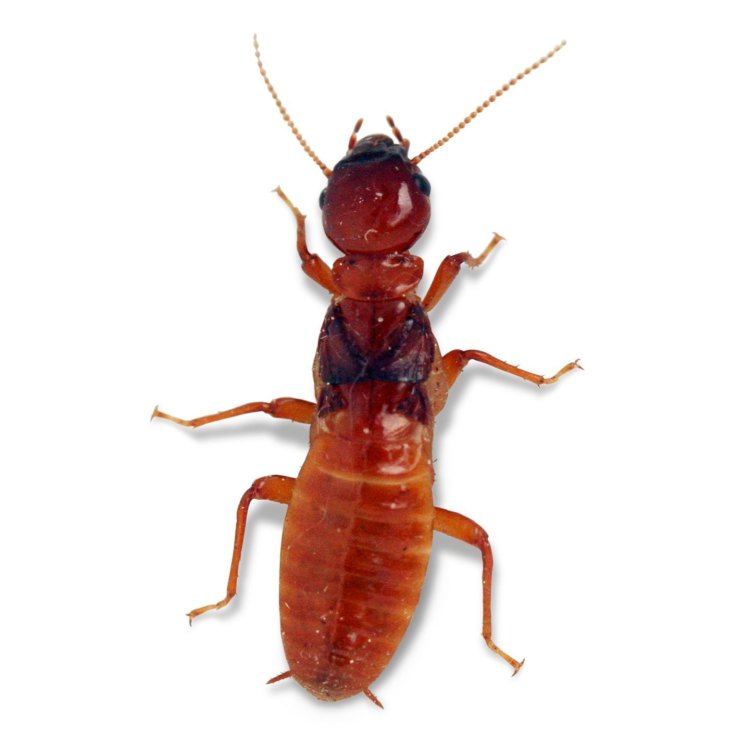
Termite
- Adult Size:
- Average Lifespan: The average lifespan of a termite varies depending on the species, but it is generally around 2 to 5 years.
- Reproduction: Termites reproduce sexually, with a queen and king being responsible for starting new colonies.
- Reproductive Behavior: During the reproductive period, winged termites (alates) leave the colony in search of a mate and a suitable location to start a new colony.
- Sound or Call: Termites do not produce sounds or calls.
- Migration Pattern: Termites do not undergo long-distance migration.
- Social Groups: Termites live in highly organized social groups called colonies, which can consist of several hundred to several million individuals.
- Behavior: Termites are known for their ability to construct elaborate underground nests, known as termite mounds or colonies.
- Threats: Termites are considered pests as they can cause significant damage to wooden structures, crops, and trees.
- Conservation Status: Termites are not assessed individually for conservation status, but they are generally abundant and not considered endangered.
- Impact on Ecosystem: Termites play a crucial role in the ecosystem as decomposers, breaking down dead plant material and recycling nutrients back into the soil.
- Human Use: Termites are not commonly used by humans, but some species are consumed as food in certain cultures.
- Distinctive Features: Termites have soft bodies, straight antennae, and a unique caste system consisting of workers, soldiers, and reproductive individuals.
- Interesting Facts: 1. Termites are often referred to as 'silent destroyers' due to their ability to cause extensive damage without immediate detection. 2. Some termite species can build massive mounds that can reach several meters in height. 3. Termites have been around for more than 250 million years, making them one of the oldest insect groups.
- Predator: Termites have various predators including ants, birds, reptiles, and mammals.
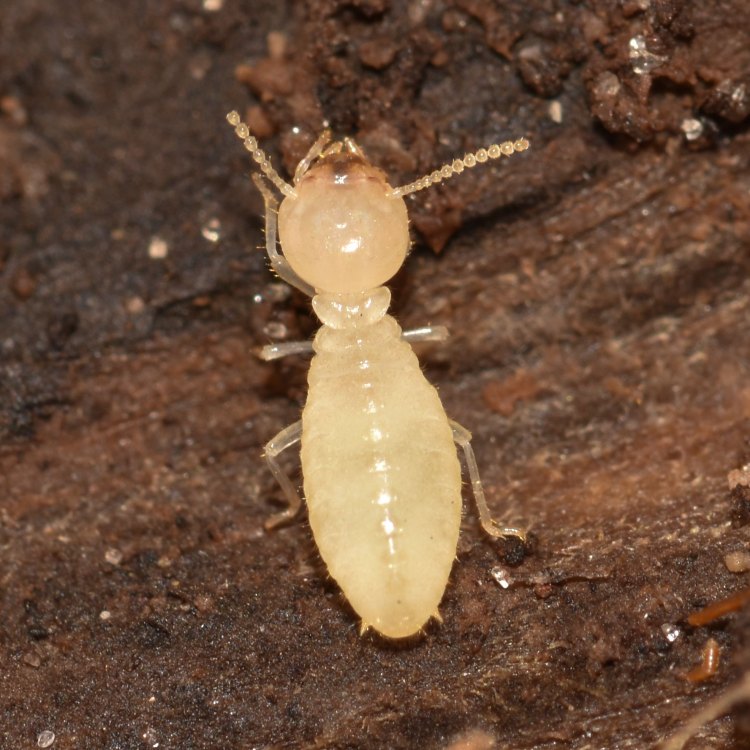
Isoptera
The Remarkable and Misunderstood World of Termites
When you hear the word "termite," what comes to mind? Most likely, these tiny insects are seen as nothing more than pests that can cause extensive damage to wooden structures. But the reality is, termites are much more fascinating and complex creatures than we give them credit for. From their elaborate social structures to their crucial role in the ecosystem, termites are truly remarkable insects that deserve a closer look.Adult Size:
Termites, belonging to the order Isoptera, vary in size depending on the species PeaceOfAnimals.Com. The smallest species are only a few millimeters long, while the largest can grow up to 4 inches in length. Despite their small size, termites are incredibly industrious and capable of building massive mounds and intricate tunnel systems.
Average Lifespan:
The average lifespan of a termite varies, depending on the species. In general, termites live anywhere from 2 to 5 years. However, the queens and kings of certain termite species can live for decades, resulting in the continuous growth and maintenance of their colonies.
Reproduction:
Termites reproduce sexually, with a queen and king being responsible for starting new colonies. These reproductive individuals have wings and are known as "alates". During the reproductive period, which usually occurs during warmer months, alates leave the colony in search of a mate and a suitable location to start a new colony.
Once they find a suitable partner, the alates break off their wings and begin to burrow into the ground to establish their new home Tiger Swallowtail Caterpillar. The queen can lay thousands of eggs in a single day, which will later hatch into worker termites that will maintain and expand the colony.
Reproductive Behavior:
The reproductive behavior of termites is quite fascinating. In some species, the winged alates from different colonies will gather in one area and engage in a "nuptial flight". During this flight, the male and female alates pair up and break off their wings before finding a suitable nesting location together.
In other species, the alates from one colony will gather and create a swarm. This is known as "broodmate recognition" and is believed to increase genetic diversity and reduce the chances of inbreeding.
Sound or Call:
Unlike many other insects, termites do not produce any sounds or calls. They communicate through chemical signals, vibrations, and physical contact. These signals help termites coordinate their activities and maintain the complex social structures within their colonies.
Migration Pattern:
Termites do not undergo long-distance migration, as they are not capable of traveling far from their colony. However, they do employ a unique method of migration within their colony, known as "probing". This is where worker termites will create tunnels and explore new areas to find food sources and expand their territory.
Social Groups:
One of the most fascinating aspects of termites is their highly organized social structure. Termites live in colonies, consisting of several hundred to several million individuals. These colonies are divided into different castes, each with a specific role and duty.
The three main castes in a termite colony are workers, soldiers, and reproductive individuals. Workers are responsible for maintaining the colony and gathering food, while soldiers protect the colony from threats. The reproductive individuals, as mentioned earlier, consist of queens and kings and are responsible for reproduction and expanding the colony.
Behavior:
Termites are known for their remarkable ability to construct elaborate underground nests, known as termite mounds or colonies. These structures are built using a combination of mud, saliva, and fecal matter, creating a durable and moisture-resistant home for the colony.
The behavior of termites within a colony is highly cooperative and organized. Each caste has its own specific tasks, and the entire colony works together to ensure the survival and growth of the colony. For example, workers will build and maintain the colony, while soldiers will defend it against threats. The queen, meanwhile, is responsible for reproducing and ensuring the continuation of the colony.
Threats:
While termites may be beneficial in the ecosystem, they can also be a major nuisance and threat to humans. Termites are considered pests as they can cause significant damage to wooden structures, crops, and trees. They feed on cellulose, which is found in wood and other plant materials, and can cause extensive damage to buildings and crops.
Though termites may appear small and harmless, their ability to destroy and cause financial losses can have a devastating impact on homeowners and businesses. It is estimated that termites cause billions of dollars in damages each year, making them a significant threat that needs to be addressed.
Conservation Status:
Termites are not assessed individually for conservation status as they are highly abundant and not considered endangered. However, their role in the ecosystem is crucial and, therefore, their preservation is vital for maintaining a healthy balance in nature.
Impact on Ecosystem:
While termites may be seen as pests to humans, they play a significant role in the ecosystem as decomposers. Termites break down dead plant material and recycle nutrients back into the soil, which helps with soil fertility and the growth of new plant life.
In addition, termite mounds provide a habitat for other organisms such as plants, fungi, and animals. These mounds also help with water filtration and soil aeration, making them an essential part of the ecosystem.
Human Use:
Termites are not commonly used by humans, but there are a few unique ways they are utilized. In some cultures, certain termite species are consumed as food, providing a good source of protein and nutrition. Termites have also been studied and used in the field of biomimicry, where their unique abilities and social structures are studied and replicated in technology and architecture.
Distinctive Features:
Termites have distinct features that set them apart from other insects. One of their most distinctive features is their soft bodies, which are fragile and susceptible to drying out. To combat this, termites live in moist environments and often build their colonies underground.
They also have straight antennae, which they use to sense their surroundings and communicate with other termites. But perhaps their most distinctive feature is their unique caste system of workers, soldiers, and reproductive individuals, which allows them to live and function as a highly organized and cooperative colony.
Interesting Facts:
1. Termites are often referred to as "silent destroyers" due to their ability to cause extensive damage without immediate detection. This is why regular inspections and preventative measures are crucial in protecting homes and buildings from termite infestations.
2. Some termite species can build massive mounds that can reach several meters in height. The largest known termite mound was found in Australia and measured over 40 feet tall.
3. Termites have been around for more than 250 million years, making them one of the oldest insect groups on the planet. They have survived numerous mass extinctions and continue to thrive in various habitats around the world.
Predator:
Despite their destructive behavior, termites do have predators in the wild, including ants, birds, reptiles, and mammals. These predators play a crucial role in maintaining the termite population and preventing them from becoming too abundant and causing excessive damage.
In conclusion, termites may be seen as pests, but their unique features, behaviors, and role in the ecosystem make them truly remarkable creatures. They have evolved to thrive in a highly cooperative and organized society, and their ability to break down and recycle nutrients play a crucial role in maintaining a healthy ecosystem. It's time we appreciate these little insects for all they do and strive to find ways to coexist with them rather than seeing them as a threat.
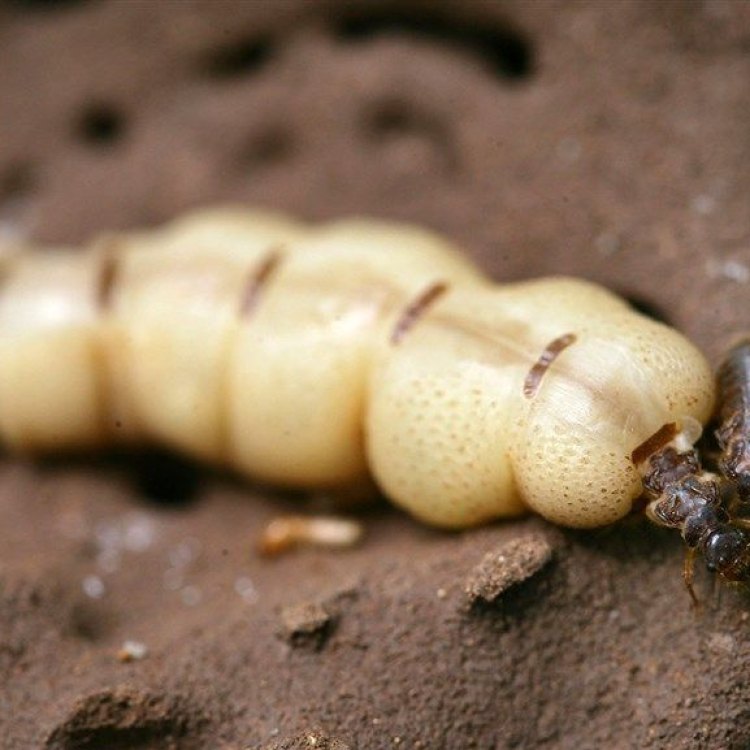
The Fascinating World of Termites: Builders of the Animal Kingdom
Disclaimer: The content provided is for informational purposes only. We cannot guarantee the accuracy of the information on this page 100%. All information provided here may change without prior notice.

